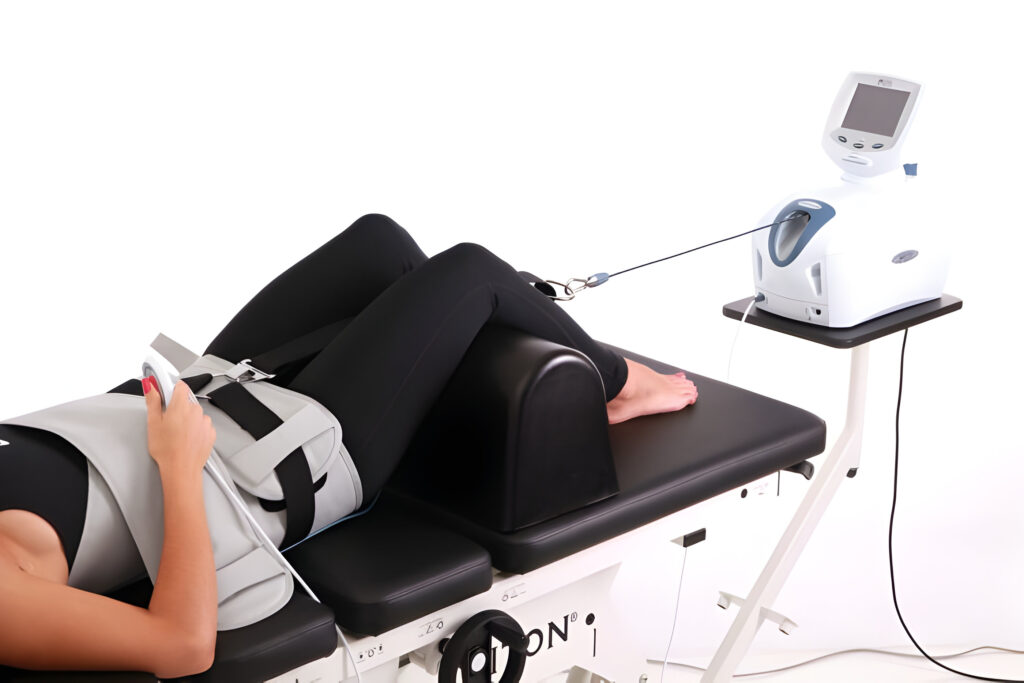![]() +971 6 522 6368
+971 6 522 6368 ![]() +971-56-994-6523
+971-56-994-6523 ![]() info@resalahphysio.com
info@resalahphysio.com
Traction
What is traction?
Traction is a therapeutic method aimed at alleviating pain caused by pressure on vertebral discs. It involves manually stretching the spine to diminish disc pressure, resulting in pain reduction for the individual.
How does traction help?
Traction provides relief by addressing the impact of disc damage on spinal nerves. The spinal discs, positioned between vertebrae, consist of a resilient outer layer encasing a softer interior. Damage to the disc under pressure can lead to a protrusion, causing compression of adjacent nerves and resulting in pain. Traction involves gently pulling the vertebrae apart, alleviating pressure on the affected disc. This process facilitates the retraction of the protruding inner disc material, relieving nerve compression and reducing pain. Additionally, traction supports the rehydration of the disc, contributing to its overall health and function.

Who benefits from traction?
Traction, which involves the application of a pulling force to a part of the body, is commonly used in the management of various musculoskeletal conditions. The conditions you mentioned—herniated or prolapsed disc, sciatica, neck pain, spondylitis, spinal stenosis, and degenerative disc disease—are some examples where traction may be beneficial. Here’s how traction can benefit individuals with these conditions:
Herniated or Prolapsed Disc: Traction may help relieve pressure on the affected disc and reduce symptoms such as pain and numbness associated with a herniated or prolapsed disc.
Sciatica: Sciatica often results from compression of the sciatic nerve. Traction can potentially alleviate this compression, reducing pain and discomfort associated with sciatica.
Neck Pain: Traction can be used to decompress the cervical spine, which may help relieve neck pain. It’s often employed in conditions such as cervical radiculopathy or cervical spondylosis.
Spondylitis: Traction may be part of the treatment plan for spondylitis, a condition involving inflammation of the vertebrae. It can help reduce pressure on the affected spinal segments and alleviate associated symptoms.
Spinal Stenosis: Traction can create space within the spinal canal, potentially relieving pressure on the nerves affected by spinal stenosis. This may lead to a reduction in pain and other symptoms.
Degenerative Disc Disease: Traction may provide relief by reducing the load on degenerated discs and promoting a more favorable environment for healing.
